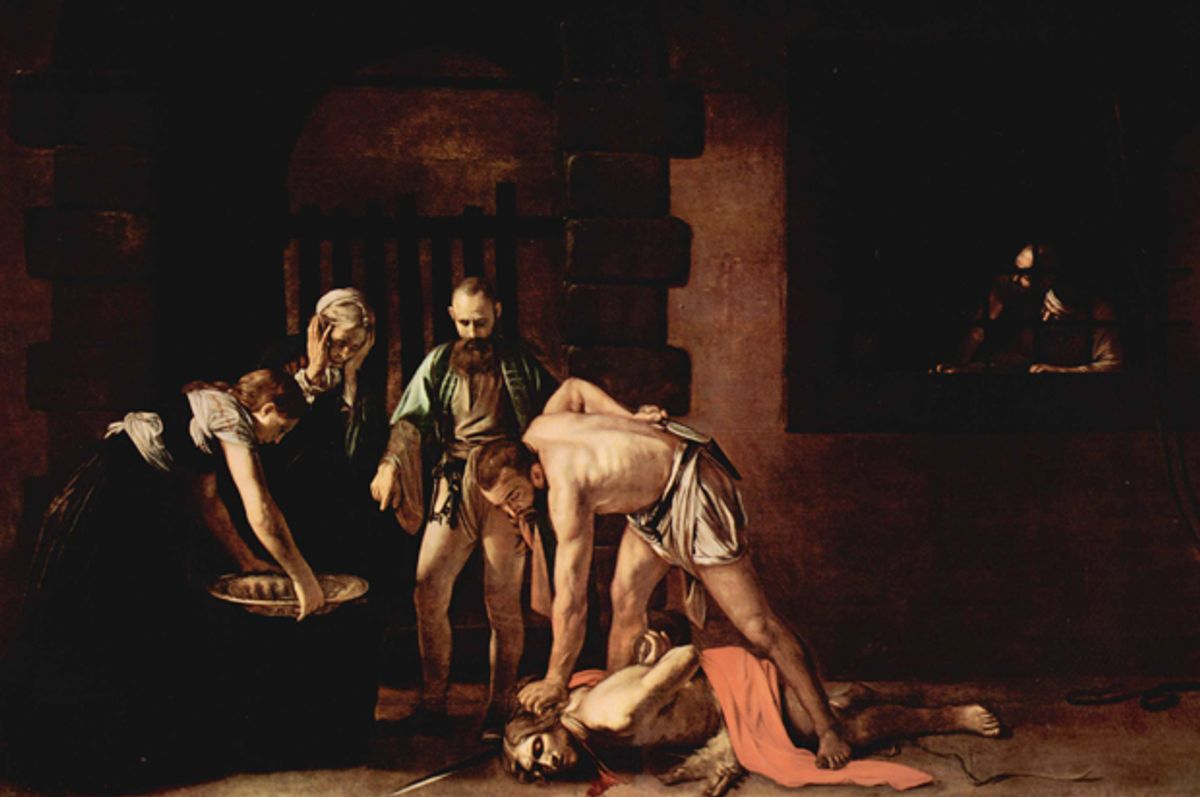Last week, we delved into the sordid history of one of the most celebrated painters in art history, Caravaggio. We left off with his flight from Rome, as he sought a papal pardon to avoid standing trial for the murder of rival Ranuccio Tomassoni.
When Caravaggio fled Rome rather than face trial for the murder of rival Ranuccio Tomassoni, he first set off for the Colonna family estates outside of the city. He continued on to Naples, where he scored major lucrative commissions thanks to interventions by the Colonna family. While on the run, Caravaggio was still the most popular avant-garde painter of the time, and his work was welcomed wherever he went. He might have remained in Naples, but a friend, Fabrizio Sforza Colonna, was about to set off for Malta. Colonna was the general of the galleys of the Knights of Malta, a medieval Crusader order (the Hospitallers) populated with members of Europe’s finest families, and enjoyed huge influence, particularly at the Vatican. Caravaggio saw membership in the order as his best chance for a pardon, so he joined Colonna and sailed for Malta. There, he was immediately welcomed by Alof de Wignacourt, the Grand Master of the Knights of Malta, who was delighted that so famous an artist should rock up on the shores of his rocky island.
While another knight, Malaspina, commissioned religious works — Caravaggio’s "Saint Jerome" and "Beheading of John the Baptist" — Wignacourt had his portrait painted, as did some other illustrious knights. Things were looking good for Caravaggio. Until, Caravaggio being Caravaggio, he got into trouble. The exact nature of the trouble is not clear, but it seems that it involved him getting into a fight with another knight — an aristocrat to boot — in which he broke down a door and beat up his opponent. Having arrived in 1607, by mid-1608 he was cast out of the order, referred to as a “putrid and fetid member,” and thrown in prison. Alas, history does not record just how, but he managed to escape from the prison and make his way to Sicily.
In Sicily, Caravaggio’s art changes, and it has to do with the fact that he was constantly on the move, fearing for his life. He finished his paintings more quickly, with thin enough layers of oil paint that you can see the weft of the canvas through the pigment, as he didn’t have the luxury of waiting around for oils to dry. While taken in by former roommate Mario Minniti, he moved around the island until he learned of a new opportunity for a papal pardon. A new pope was on the scene, and in particular the pope’s nephew, Cardinal Scipione Borghese, was a great art lover and a great admirer of Caravaggio. Armed with several paintings intended as gifts for Borghese, in hopes that the cardinal would intervene on his behalf and arrange a pardon, Caravaggio set off for mainland Italy.
When he landed at Naples, however, someone was waiting for him. He was attacked and disfigured so badly that his face was beyond recognition. It is not clear whether the attackers were stalking him for revenge against the death of Tomassoni, or in revenge for the assault and flight from Malta. Caravaggio had plenty of enemies.
But he survived, and was determined to move on. He made his way back toward Rome, at this point with no more possessions than what he carried with him, including the paintings he hoped to swap for his pardon. Somewhere on his way through the marshes south of Port’Ercole, he grew ill and died in 1610, before reaching Rome where, in all probability, a pardon did indeed await him. What killed him remains a mystery. The most likely culprit was malaria, contracted from a mosquito during his travels, but others have theorized that his wounds became infected, that he had lead poisoning from his art materials (which might explain some of his erratic, violent behavior), or that one of his many enemies caught up with him and finished him off. Indeed, two of his pre-modern biographies wrote that he was constantly being “followed by his enemies,” without specifying to whom they referred. But Caravaggio was his own worst enemy — pursued by karma, living a criminal’s life on the run, and changing the face of art in the process.

Shares